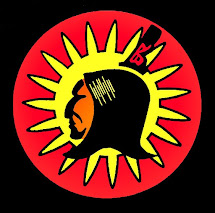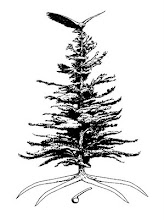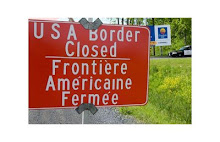
Somewhere in our history it became common-place to refer to the Kainerehkowa as the "Great Law of Peace". It sounds benign enough but the fact is that it is wrong. Some expressions just don't translate well especially when a culture-specific concept is involved. The best literal translation would be; "a great good way". Doesn't sound quite as impressive as a "Great Law of Peace" now does it? The concept of a "law" and any variation of the word for "peace" is no where in the word. Our concept of a "good way" or a "good path" is tied to the image of a path worn through our lands by those that came before us. A path that served our people well and even if we strayed from that path, we could find our way back to it to right ourselves again. The differences between the concept of a law that must be followed and a path that has been constructed to make life easier is significant and should not be ignored. Dekanawida and Hiawentha did not make up or create the Kaianerehkowa from thin air. It came from those that came before them. They led us back to the path and made it clear to us that this Great Good Way should be maintained and used to ensure our peace and survival. It was never implied that certain areas of our Mother were forbidden to be travelled on; just that a path had been laid down by the feet of all our relatives that have come before us, should we ever find ourselves lost or troubled. The problem is not that we stray from the path but that we forget our way back to it. This Kaianerehkowa is represented by the Hiawentha Wampum Belt and the words that were spoken into those wampums were to be repeated and discussed often enough so that we would always know how to get back on the right path.
Perhaps it was the best way to explain our ways to the white man that got us calling the Kaianerehkowa the Great Law of Peace. We have referred to it as our Constitution, our government and the greatest democracy the world has ever known. But it is much more and much less. The Kaianerehkowa did not dictate our lives. It was not law or set of laws to follow. It was not a standard to judge the lawful from the unlawful. The Kaianerehkowa uses nature and metaphors to create a timeless path or process to solve problems and address the issues of life. It is neither a bible nor is it all that defines us. It does not create governmental authority over the consent of the governed but rather establishes a natural process for people to govern themselves. It is more than good path; it is a Great Good Way.














![-[]-[]-/\-[]-[]-](https://blogger.googleusercontent.com/img/b/R29vZ2xl/AVvXsEjLoXmKO8PJVQ5pZ2q7GX7nFKw8H2tb28dxt-o10FUBNtOGszWhWoLB7tgjtMgtISpuSxNW3fcDxfuSS2DqojsdjNJ1lVggyUS374PnzsDbOhk4ukvtTunFQcyfkckZeBzcLbri4LDYN_E/s214/29-03-A-voice-from-the-Akw-.jpg)





3 comments:
I recieved news of the new US Dollar as I was writing the post on the Kaianerehkowa. Even as I was writing that it does not translate to The Great Law of Peace, the US Mint is pounding out millions of coins calling it just that. Who ever the Haudenosaunee consultant who was used on this project was, they managed to screw this up as well as the depiction of the belt. Note that there is no continuation on the Eastern and Western Doors. This is no small mistake nor is it a Freudian slip. This further illustrates their rewrite of our history.
Now don't get me wrong, the desire to achieve and maintain peace is and was a significant part of the Kaianerehkowa. The reading of the Hiawentha belt starts with the image of the Tree of Peace being planted with its White Roots of Peace extending in the four directions so that anyone who would seek the shelter of this peace could trace those roots back to our people and our ways. All enlightened people desire peace. The Kaianerehkowa provided a process to resolve conflicts and address the local and regional issues. The fire is the key. The fire represents the family and the assembling the family for the purpose of sitting in council. At condolence it is referred to as the logs having been scattered and the process of reconstructing the fire is explained both metaphorically and literally.
I have come to think of the Kaianerehkowa as a cultural expression of human relationship externalized, just as the Lakotah Lakol Wicohan is I think of as an expression of human relationship culturally internalized. But either is hard I think to properly express the full meaning of in English, and I agree because it requires more complete cultural and social understanding, and no short sequence of words can convey that alone.
Post a Comment